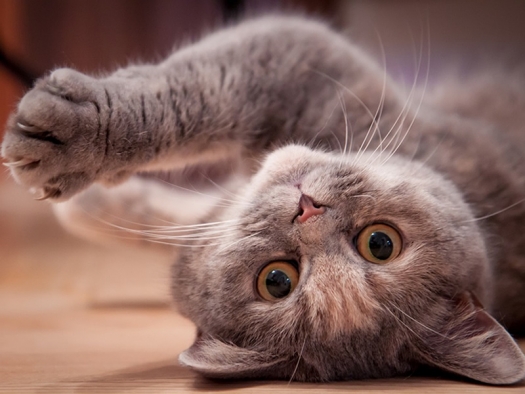Suggestions from Dr. Marty Goldstein
GrayCatLookingUpsidedown.jpg

Photo by Richard Stocker / Pixabay.com
It seems like there are scary health headlines everywhere these days. And I think it’s safe to say these are troubling times.
I want to remind you that you can do a lot to help keep your kitty (and yourself) safe. And in my opinion, there are FIVE essentials you should be doing on a daily basis.
The good news is, they don’t take much time or effort on your part. Yet, they’re extremely effective in regards to health and wellness.
You might even want to print these out and keep them on the fridge, just as a daily reminder.
#1. Wash your hands
It might sound simple, but it’s so important. Best of all, you don’t need any special disinfecting chemicals or cleaners.
You can easily kill viruses with soap, warm water, and at least 20 seconds of hand washing.
If you want to give your kitty a bath, that’s okay too. Just be sure to use gentle, 100% organic cat shampoo.
Important Note: Don’t wipe your cat with any wipes that say “antiseptic” or contain harsh chemicals, like ethyl alcohol.
Your cat grooms itself all day long, and might accidentally ingest any chemicals you put on it's coat. Plus, it’s not good for your cat’s skin or fur health, since harsh cleaners can strip away their natural oils.
#2. Clean hard surfaces in your home
Studies show it's easier for viruses to live on your countertop or doorknobs than on your kitty’s fur.
That’s because germs can stay on smooth, firm surfaces for much longer than on soft surfaces, like fabric or fur. So be sure to keep your common household surfaces clean.
That way, your hands (and your kitty’s paws) stay clean, too.
#3. Practice social distancing (with your cat)
If you have an indoor/outdoor cat who’s known to visit your neighbors, simply ask your neighbors not to pet your kitty.
You can even attach a little paper “Please keep your social distance” sign on your cat’s collar if you want to.
By the same token, don’t interact with cats that aren’t your own, even if you know them.
And of course, if you’re feeling ill, don’t let your cat outside to roam until you’ve recovered.
#4. Call your veterinarian with concerns before you leave home
Many veterinary offices are closed to walk-ins, because they’re operating with very limited staff. That’s why you should call ahead and talk to your kitty’s doctor before trying to take them in for an appointment.
Your vet might offer you a telephone or video consultation so you and your cat don’t have to leave home at all.
Just be sure to have all your cat’s info ready when you call.
Important Note: If you have a kitten, and you haven’t been able to get them spayed or neutered, please don’t let them outside. Cats can become “parents” before they're even a year old, so unless you’re hoping for a litter of new fur babies, it’s a good idea to keep your unneutered/unspayed cats inside.
#5. Keep calm and purrrr on :)
These can be unsettling times for everyone, including your cat. So no matter what, try and keep a few of their routines the same.
Especially, their meal times and horsing around.
Also, be sure they always have fresh, clean water and fresh kitty litter (this can also help them relax.)
Of course, plenty of snuggles are essential to helping your kitty (and you) stay happy and healthy.
And that’s it!
Even though these 5 tips are simple, they can go a long way in preventing the spread of illnesses.
I hope you and your cat are staying healthy and safe. Oh, one last thing before I go.
Do me a favor and take a quick “kitty break.” Have some snuggles and play a few games with your furry best friend. After all, it’s good for the both of you!
To you and your best friend,
Dr. Marty


